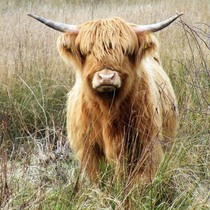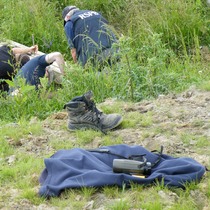

Biodiversity
Action
Plan

Conservation Floodplain Grazing Marsh sites are a priority in the Dearne Valley of Barnsley; most are now being managed for wildlife.
Factors causing loss or decline
- Ecologically insensitive flood defence works in the past.
- Land drainage and change to arable crops or silage production.
- Loss of sites also due to housing, industrial and recreational development, mineral extraction, or use for tree planting.
- Groundwater extraction causing site to dry out.
- Neglect and decline in traditional management, cutting and grazing, leading to rush and scrub encroachment and silting up of ditches.
- Overstocking by livestock with over-grazing, compaction and enrichment from supplementary feeding.
- Herbicide and pesticide use and pollution of ground or surface water from industry or runoff.
Legal protection
The designation of the Dearne Valley Wetlands in May 2021 as a SSSI gives legal protection to the included sites.
One site has Local Nature Reserve status and most sites are managed as nature reserves without this designation.
Local Wildlife Sites (LWS) have a presumption against development or change of use when planning consent is required. The Local Plan also identifies relevant sites as green space.
Specific wildlife species are protected under the Wildlife and Countryside Act. This includes intentionally or recklessly disturbing birds at, on or near an ‘active’ nest.
Many of the sites fall in statutory washlands for which the Environment Agency has regulatory responsibility.
Positive conservation management
- Traditional low-intensity farming of Grazing Marsh with light seasonal grazing and possibly a late hay crop.
- Grazing with cattle to produce a varied sward with shorter grassland and taller tussocks, plant diversity and some bare ground.
[Grazing September to March, avoids ground-nesting bird breeding season.] - Managing water levels and flooding to maintain damp grassland and standing water bodies, and form seasonal shallow pools and marshy, muddy areas in Spring and Summer.
- Winter flooding with 30%+ land covered in shallow water benefits overwintering wildfowl and waders. Sufficient uncovered grassland (40%+) for grazing by Wigeon etc should be retained.
- The water levels should be reduced progressively in Spring and Summer to create a succession of wet muddy margins and marshy grassland for breeding wildfowl, waders and their chicks to feed in.
- Managing ditches and foot-drains in rotation [5 year] to prevent silting up; Controlling rush levels and scrub encroachment.
- Reducing disturbance and predation by for example fencing.
Links:
Floodplain meadows partnership
RSPB: Grazing grassland
RSPB: Rewetting grassland
RSPB: Grassland management
NE: Grassland management handbook
Floodplain grazing marsh standards:
Main grassland is often not very species rich
< 5% cover by undesirable species eg dock, nettle, thistle, ragwort
0% infield scrub or tree cover
For breeding waders …
< 40% cover of rushes
Between 5%-60% grass or sedge tussocks
Ground wet between March and May
For over-wintering waders and wildfowl
< 40% cover of rushes
Between 5-15 cm sward height in November
Standing water on >5% and wet ground >50% field between November and February


Grazing marsh conservation